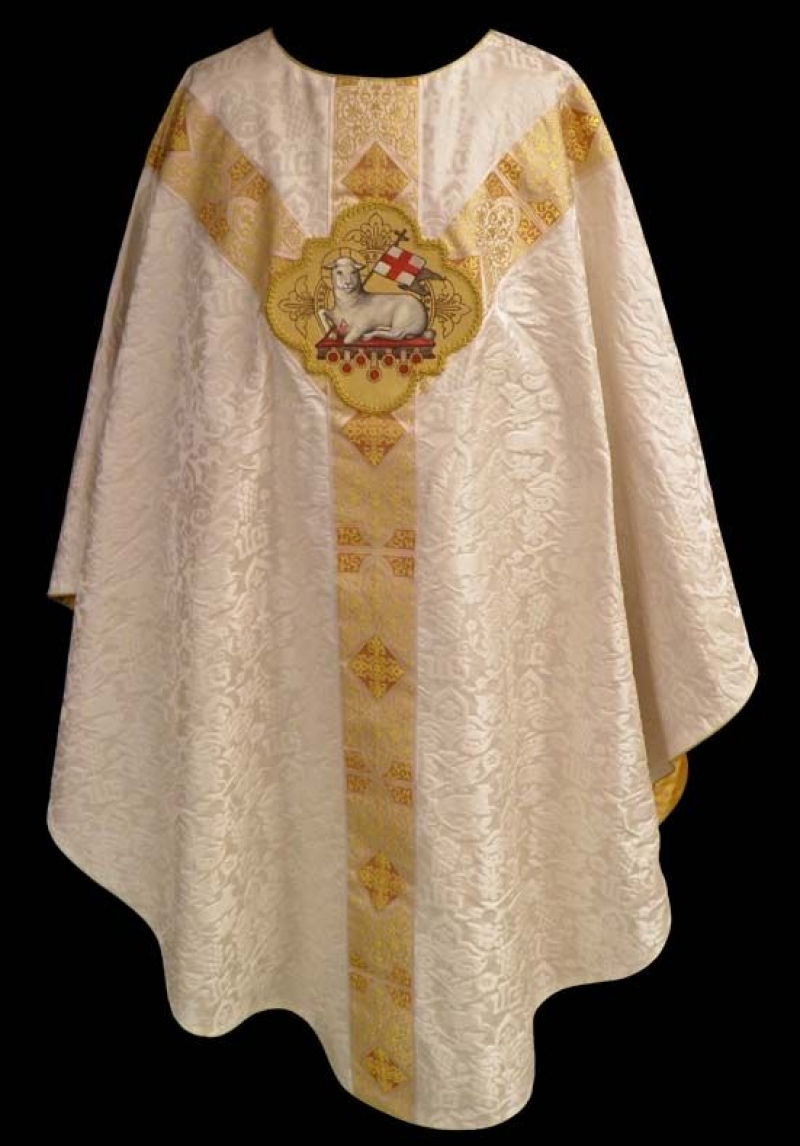Conserving an Agnus Dei Panel
“Agnus Dei” - Lamb of God - is one of the titles given to Jesus in the New Testament and consequently in the Christian tradition. It refers to Jesus' role as a sacrificial lamb atoning for the sins of humanity in Christian theology. In Christian iconography since the Middle Ages, an Agnus Dei is usually depicted holding a standard or banner with a cross. The Lamb is either facing forward or has his head turned in the opposite direction, as is the case here, a position termed reguardant. The image has been crafted in various media, including marble.

Recently, The Textile Conservation Lab at the Cathedral had the privilege of working on a small textile panel (which belongs to the Cathedral's very own Dean Daniel!) with polychrome embroidery whose highlight is the lamb made from metal threads fashioned to give the impression of wool fleece.
The panel appears to have been a salvaged part of an orphrey that had been used to decorate a chasuble. Older looms were only wide enough to weave the fabric needed for the chasuble in sections, making it necessary to stitch pieces together to form this garment. To cover the seams, strips of contrasting material were sewn over them, developing over time into heavily decorated panels, often in the shape of the cross. (See contemporary chasuble below)

In this panel below, the embroidery had been turned into a centerpiece framed by two kinds of metal decorative bands.
Presented as a fragment, the panel had several conservation issues the TCL could help with: vacuuming of surface particulates, stabilizing weakened sewing threads that secured the metal outline and brightening up the tarnished metal wires.
After this was complete, the panel was mounted on top of a padded and fabric covered board and returned to Dean Daniel for display in a way that is safe for the textile and will allow it to be appreciated and celebrated for its beauty and meaning.